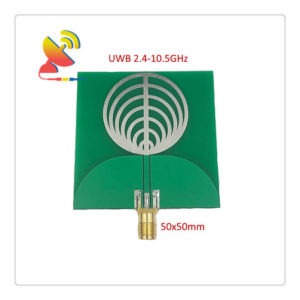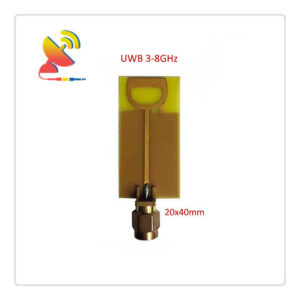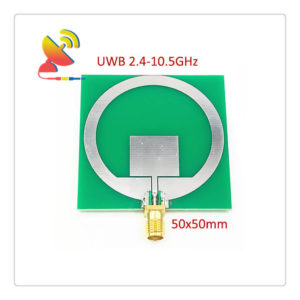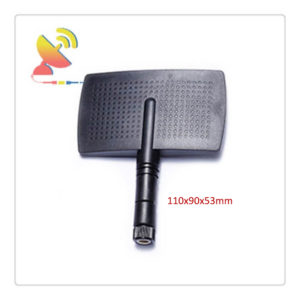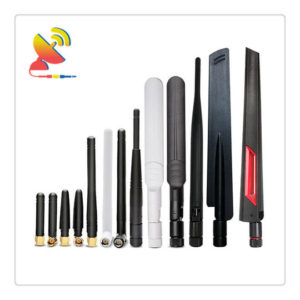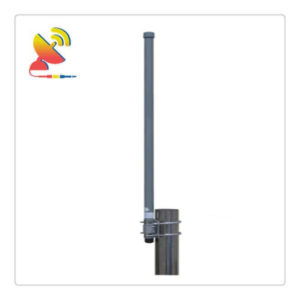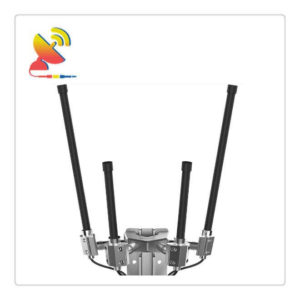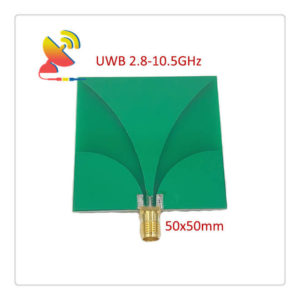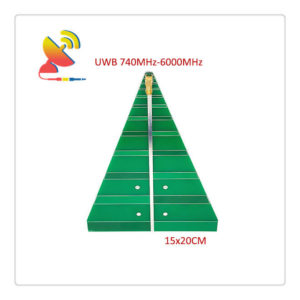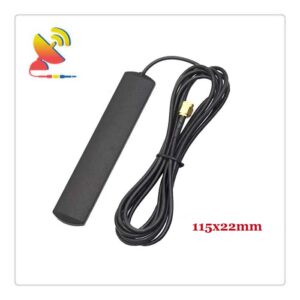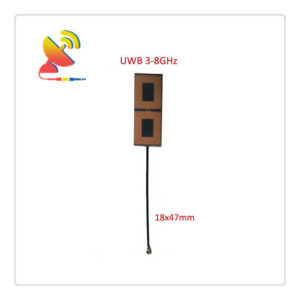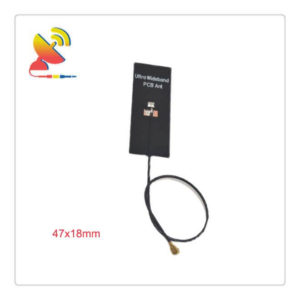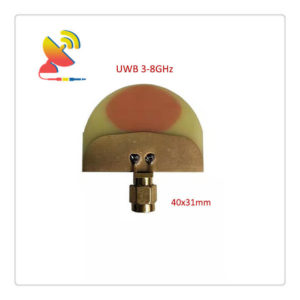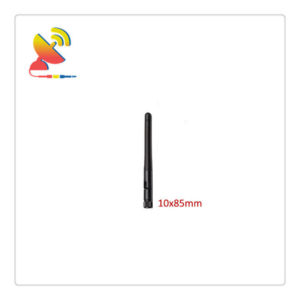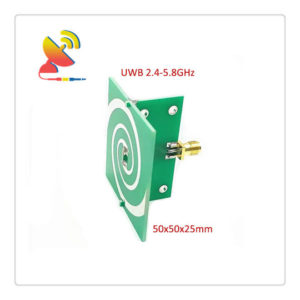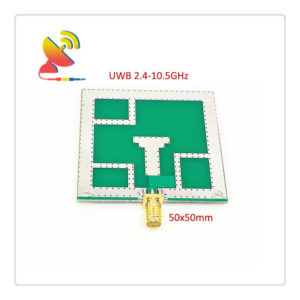UWB Antennas
-
UWB Ultra-Wideband Antenna 2.4Ghz-10.5Ghz PCB Antenna
Read more -
Telecommunication UWB Antennas For IoT M2M Wireless Applications
Read more -
Printed Circuit Board PCB Antenna UWB Antenna For Wireless Applications
Read more -
Patch Antenna Outdoor UWB Antenna For Wireless Applications
Read more -
High-performance Rubber Duck Antenna Design
Read more -
High-performance Omnidirectional Antenna Design
Read more -
High-performance Omni Antenna Design
Read more -
High-performance IoT Antenna Design
Read more -
Extra-wide Band UWB Antenna Embedded PCB Antenna
Read more -
700-6000MHz UWB Ultra-wideband PCB Antenna Log Periodic Antenna
Read more -
600-6000MHz Wideband Adhesive Mount Antenna
Read more -
3GHz-8GHz Extra-wide Band Antenna Internal PCB Antenna
Read more -
3GHz-7GHz UWB PCB Antenna
Read more -
3G-5GHz External Omnidirectional Antenna UWB Antenna
Read more -
3-8G Indoor PCB Antenna UWB Antenna For Wireless Communications
Read more -
3-7 GHz Omnidirectional Ultra-Wideband Antenna Dipole Antenna
Read more -
3-5GHz Omnidirectional UWB Antennas Ultra-Broadband Antennas
Read more -
2.4GHz-10.5GHz Embedded PCB Antenna For UWB Applications
Read more -
2.4GHz 5.8GHz Wifi UWB Antenna PCB Trace Antenna
Read more -
2.4-10.5 GHz Wireless Application UWB Antenna PCB Patch Antenna
Read more
UWB Antennas Manufacturer
C&T RF Antennas Inc is the internal & external Ultra-wideband antennas UWB antennas manufacturer in China.
In recent years, with the improvement of the technology and process of microelectronic devices, UWB technology has begun to be applied to the civilian field.
Ultra-wideband communication is a kind of communication that does not use a carrier but modulates pulses with very steep rise and fall times (usually, the pulse width is between 0.20-1.5ns), also known as pulse radio (Impulse Radio). Time Domain or Carrier Free communication.
It has a GHz-level bandwidth, and because its emission energy is quite small, it may bring a new way of voice and data communication without occupying the already crowded frequency resources.
What is Ultra-Wide Band (UWB)?
Ultra Wide Band (UWB) technology is a wireless carrier communication technology. It does not use a sinusoidal carrier but uses nanosecond non-sine wave narrow pulses to transmit data, so it occupies a very wide spectrum.
UWB technology has the advantages of low system complexity, low transmit signal power spectrum density, insensitive to channel fading, low interception capability, and high positioning accuracy. It is especially suitable for high-speed wireless access in dense multipath places such as indoors.
UWB Introduction
UWB technology is a wireless carrier communication technology that uses a frequency bandwidth above 1 GHz. It does not use a sinusoidal carrier but uses nanosecond-level non-sinusoidal narrow pulses to transmit data. Therefore, it occupies a large spectrum.
Although wireless communication is used, its data transmission rate can reach hundreds of megabits per second.
UWB technology can transmit signals over a very wide bandwidth. The Federal Communications Commission (FCC) of the United States stipulates that UWB technology: occupies a bandwidth of more than 500MHz in the 3.1~10.6GHz frequency band.
UWB technology started from the pulse communication technology that emerged in the 1960s. UWB technology uses ultra-wide baseband pulses with an extremely wide frequency spectrum for communication, so it is also called baseband communication technology and wireless carrier communication technology.
It is mainly used in military radar, positioning, and communication systems with a low interception rate/low detection rate. In February 2002, the Federal Communications Commission issued preliminary regulations on the use of spectrum and power for civilian UWB equipment.
In this regulation, a communication system with a relative bandwidth greater than 0.2 or a bandwidth greater than 500 MHz at any time of transmission is called a UWB system, and UWB technology is approved for civilian use.
Subsequently, Japan opened the ultra-wideband frequency band in August 2006. Because UWB technology has the characteristics of the high data transmission rate (up to 1Gbit/s), strong anti-multipath interference ability, low power consumption, low cost, strong penetration ability, low interception rate, and sharing spectrum with other existing wireless communication systems, etc.,
UWB technology has become the preferred technology of wireless personal area network communication technology (WPAN).
UWB Fundamental
UWB is essentially a carrier-free spread spectrum technology that uses shock pulses with a very low duty cycle as the information carrier. It directly modulates shock pulses with the steep rise and fall times.
The typical UWB directly transmits impulse bursts and no longer has the traditional concept of intermediate frequency and radiofrequency.
At this time, the transmitted signal can be regarded as a baseband signal (in terms of conventional radio) or a radio frequency signal (from the transmitted signal Spectral components considered).
Shock pulses usually use single-period Gaussian pulses, and one information bit can be mapped into hundreds of such pulses. The width of a single-cycle pulse is on the order of nanoseconds and has a wide frequency spectrum.
UWB has developed a new wireless channel with gigahertz capacity and the highest space capacity. The CDMA-based UWB pulse wireless transceiver generates a pulse sequence with a certain repetition period in the transmitter clock generator.
The information to be transmitted by the user and the pseudo-random code representing the user’s address are separately or synthesized to perform the above-mentioned periodic pulse sequence in a certain way Modulation, the modulated pulse sequence drives the pulse generating circuit to form a pulse sequence with a certain pulse shape and regularity, and then amplifies it to the required power, and then couples to the UWB antenna for transmission.
At the receiving end, the signal received by the UWB antenna is amplified by a low-noise amplifier and sent to one input of the correlator. The other input of the correlator is added with a locally generated pulse sequence synchronized with the sending end and modulated by the user pseudo-random code.
The receiving end signal and the locally synchronized pseudo-random code modulated pulse sequence undergo multiplication, integration, and sample-and-hold operations in the correlator to produce a signal separated from the user address information, which contains only user transmission information and other interference, And then demodulates the signal.
UWB Features
UWB technology solves the major problems related to propagation that have plagued traditional wireless communication technology for many years. It has the advantages of being insensitive to channel fading, low transmit signal power spectral density, low interception rate, low system complexity, and positioning accuracy of several centimeters.
1. The realization of the system structure is relatively simple
The communication carrier used by the current wireless communication technology is a continuous electric wave, the frequency and power of the carrier change within a certain range, and the change of the state of the carrier is used to transmit information.
The UWB technology does not use carrier waves, it transmits data signals by sending nanosecond-level non-sine wave narrow pulses.
The transmitter in the UWB system directly excites the antenna with small pulses, without the upconversion required by traditional transceivers, and thus does not require a power amplifier and mixer.
UWB systems allow the use of very inexpensive broadband transmitters. At the same time, at the receiving end, the UWB system receiver is also different from the traditional receiver, it does not require intermediate frequency processing, so the realization of the UWB system structure is relatively simple.
2. High-speed data transmission
In civilian goods, the transmission range of UWB signals is generally required to be within 10m. According to the modified channel capacity formula, the data transmission rate of civilian goods can reach 500Mbit/s. UWB technology is an ideal modulation technology for personal communications and wireless local area networks.
UWB technology exchanges a very wide frequency bandwidth for high-speed data transmission, and does not occupy the already crowded frequency resources alone, but shares frequency bands used by other wireless technologies.
In military applications, UWB technology can use huge spread spectrum gain to achieve long-distance, low interception rate, low detection rate, high security, and high-speed data transmission.
3. Low power consumption
The UWB system uses intermittent pulses to send data. The pulse duration is very short, usually between 0.20~1.5ns, and has a very low duty cycle. The system power consumption is very low. The power consumption of the system is only Several hundred microwatts to tens of milliwatts.
The power of civilian UWB devices is generally about 1/100 of the power required by traditional mobile phones, and about 1/20 of the power required by Bluetooth devices. Military UWB radio power consumption is also very low.
Therefore, UWB devices have great advantages over traditional wireless communication devices in terms of battery life and electromagnetic radiation.
4. High security
As the physical layer technology of the communication system, UWB technology has natural security performance.
Since UWB signals generally disperse the signal energy in a very wide frequency band, for general communication systems, UWB signals are equivalent to white noise signals, and in most cases, the power spectral density of UWB signals is lower than natural electronic noise. It is very difficult to detect the pulse signal from electronic noise.
After the pulse parameters are pseudo-randomized by coding, pulse detection will be more difficult.
5. Strong multipath resolution ability
Since most of the radio frequency signals of conventional wireless communication are continuous signals or their duration is much longer than the multipath propagation time, the multipath propagation effect limits the communication quality and data transmission rate because the ultra-wideband radio transmission is of extremely short duration, duty cycle and a very small single-period pulses, multipath signals are separable in time.
If the multipath pulses are to overlap in time, the length of the multipath transmission path should be less than the product of the pulse width and the propagation velocity. Since the pulse multipath signals do not overlap in time, it is easy to separate the multipath components to make full use of the energy of the transmitted signal.
A large number of experiments have shown that, in a multipath environment where the multipath fading depth of conventional radio signals is 10~30dB, the fading of ultra-wideband radio signals is less than 5dB at most.
6. Accurate positioning
The impulse pulse has high positioning accuracy. With UWB technology, it is easy to integrate positioning and communication, which is difficult for conventional radios.
UWB technology has a strong penetrating ability and can accurately locate indoors and underground, while GPS (Global Positioning System) can only work within the visual range of GPS positioning satellites.
Unlike GPS, which provides an absolute geographic location, an ultra-wideband radio locator can give a relative position, and its positioning accuracy can reach a centimeter level. In addition, an ultra-wideband radio locator is cheaper in price.
7. Simple project and low cost
In terms of engineering implementation, UWB technology is much simpler than other wireless technologies and can be fully digitalized. It only needs to generate pulses in a mathematical way and modulate the pulses, and all the circuits needed to realize the above process can be integrated on a chip, and the cost of the equipment is very low.
The UWB system transmits and receives nanosecond-level non-sinusoidal narrow pulses, and directly modulates without using a sinusoidal carrier. The receiver can directly complete signal detection by using related devices.
In this way, the transceiver does not require complex carrier frequency modulation. The demodulation circuit and filter only need a digital method to generate nanosecond non-sine wave narrow pulses.
Therefore, the use of UWB technology can greatly reduce the complexity of the system, reduce the volume of the transceiver, reduce the power consumption of the transceiver, and it is easy to digitize and adopt software radio technology.
UWB Technical index
UWB technology is synonymous with a very short pulse, no carrier, time domain, non-sinusoidal, orthogonal function, and large relative bandwidth wireless/radar signal.
Due to its excellent and unique technical characteristics, UWB pulse communication will be increasingly widely used in the fields of wireless multimedia communication, radar, precision positioning, through-wall detection, imaging, and measurement.
The main indicators of UWB are as follows:
Frequency range: 3.1GHz~10.6GHz;
System power consumption: 1mW~4mW;
Pulse width: 0.2ns~1.5ns;
Repetition period: 25ns~1ms;
Transmitting power: <-41.3 dBm/MHz;
Data rate: tens to hundreds of Mb/s;
Decompose the multipath delay: ≤1ns;
Multipath fading: ≤5dB;
System capacity: much higher than 3G system;
Space capacity: 1000kb/m2.
UWB Applications
UWB technology applications can be roughly divided into two categories according to the communication distance:
The first category is short-distance high-speed applications, the data transmission rate can reach hundreds of megabits per second, mainly to build short-distance high-speed WPAN, home wireless multimedia network and replace high-speed short-range wired connections, such as wireless USB and DVD, its typical communication distance is 10m;
The other is medium and long-distance (above tens of meters) low-rate applications, usually with a data transmission rate of 1Mbit/s, which is mainly used in wireless sensor networks and low-rate connections.
At the same time, because UWB technology can use low-power, low-complexity transceivers to achieve high-speed data transmission, UWB technology has developed rapidly in recent years.
It uses low-power pulses to transmit data in a very wide frequency spectrum without causing great interference to conventional narrowband wireless communication systems and can make full use of spectrum resources.
The high-speed data transceiver based on UWB technology has a wide range of uses.
C&T RF Antennas Inc manufactures the 5G NR antennas, 4G LTE antennas, 3G UMTS GSM antennas, 2G GPRS NB-IoT antennas, LoRa/LoRaWan antennas (includes 169MHz antennas, 230MHz antennas, 315MHz antennas, 433MHz antennas, 868MHz antennas, 915MHz antennas), 2.4GHz 5GHz Wi-Fi antennas, GNSS antennas, GPS antennas, Cellular antennas, UHF VHF antennas, UWB antennas, etc.
And the C&T RF Antennas Inc supplies the antenna accessories such as RF power amplifiers and repeaters, RF connectors and adapters, cable assemblies.
C&T RF Antennas Inc provides the UWB antennas for your choice. To help you select the best UWB antennas for your application, please contact us with any questions you have.
Such as the UWB antenna datasheet, UWB antenna pricing, UWB antenna inventory, and the UWB antenna types.
Showing 1–16 of 20 results
-
2.4-10.5 GHz Wireless Application UWB Antenna PCB Patch Antenna
Read more -
2.4GHz 5.8GHz Wifi UWB Antenna PCB Trace Antenna
Read more -
2.4GHz-10.5GHz Embedded PCB Antenna For UWB Applications
Read more -
3-5GHz Omnidirectional UWB Antennas Ultra-Broadband Antennas
Read more -
3-7 GHz Omnidirectional Ultra-Wideband Antenna Dipole Antenna
Read more -
3-8G Indoor PCB Antenna UWB Antenna For Wireless Communications
Read more -
3G-5GHz External Omnidirectional Antenna UWB Antenna
Read more -
3GHz-7GHz UWB PCB Antenna
Read more -
3GHz-8GHz Extra-wide Band Antenna Internal PCB Antenna
Read more -
600-6000MHz Wideband Adhesive Mount Antenna
Read more -
700-6000MHz UWB Ultra-wideband PCB Antenna Log Periodic Antenna
Read more -
Extra-wide Band UWB Antenna Embedded PCB Antenna
Read more -
High-performance IoT Antenna Design
Read more -
High-performance Omni Antenna Design
Read more -
High-performance Omnidirectional Antenna Design
Read more -
High-performance Rubber Duck Antenna Design
Read more

